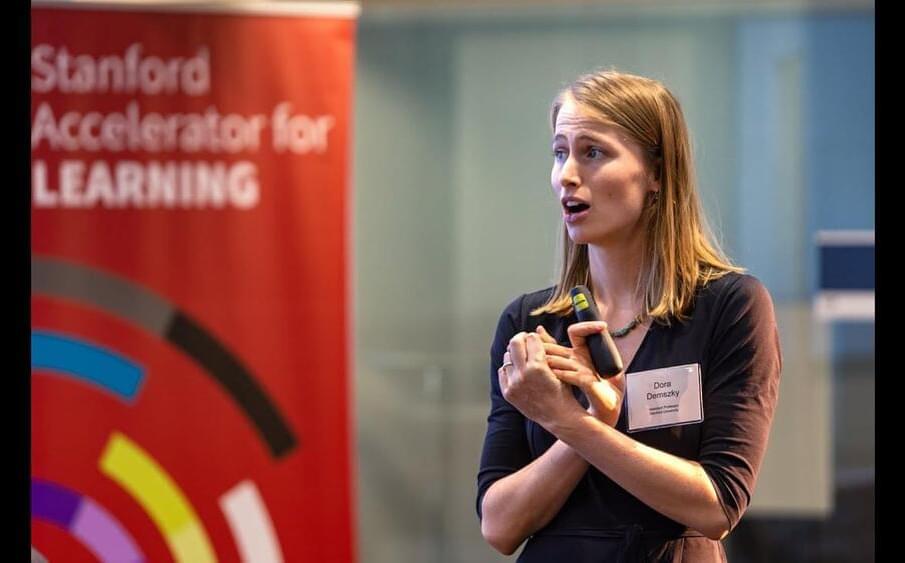The ultimate answer to the supply chain issue.
A school project for motion graphics, put together several of the product advertisements found in Philip K Dick’s 1969 sci-fi novel into a full 1m commercial. Aimed for surrealism.

The ultimate answer to the supply chain issue.
A school project for motion graphics, put together several of the product advertisements found in Philip K Dick’s 1969 sci-fi novel into a full 1m commercial. Aimed for surrealism.
“As a child, I wished for a robot that would explain others’ emotions to me” says Sharifa Alghowinem, a research scientist in the Media Lab’s Personal Robots Group (PRG). Growing up in Saudi Arabia, Alghowinem says she dreamed of coming to MIT one day to develop Arabic-based technologies, and of creating a robot that could help herself and others navigate a complex world.
In her early life, Alghowinem faced difficulties with understanding social cues and never scored well on standardized tests, but her dreams carried her through. She earned an undergraduate degree in computing before leaving home to pursue graduate education in Australia. At the Australian National University, she discovered affective computing for the first time and began working to help AI detect human emotions and moods, but it wasn’t until she came to MIT as a postdoc with the Ibn Khaldun Fellowship for Saudi Arabian Women, which is housed in the MIT Department of Mechanical Engineering, that she was finally able to work on a technology with the potential to explain others’ emotions in English and Arabic. Today, she says her work is so fun that she calls the lab “my playground.”
Alghowinem can’t say no to an exciting project. She found one with great potential to make robots more helpful to people by working with Jibo, a friendly robot companion developed by the founder of the Personal Robots Group (PRG) and the social robot startup Jibo Inc., MIT Professor and Dean for Digital Learning Cynthia Breazeal’s research explores the potential for companion robots to go far beyond assistants who obey transactional commands, like requests for the daily weather, adding items to shopping lists, or controlling lighting. At the MIT Media Lab, the PRG team designs Jibo to make him an insightful coach and companion to advance social robotics technologies and research. Visitors to the MIT Museum can experience Jibo’s charming personality.
Head over to our on-demand library to view sessions from VB Transform 2023. Register Here
It’s not only programming, journalism and content moderation that OpenAI is seeking to revolutionize with the use of its landmark large language models (LLMs) GPT-3, GPT-3.5 and GPT-4.
Today, the company published a new blog post titled “Teaching with AI” that outlines examples of six educators from various countries, mostly at the university level though one teaches high school, using ChatGPT in their classrooms.

Came across this. Any aviation fans? MIT does it again but this time with propellers.
Hope you all enjoy it.
Dont forget to subscribe and give a thumbs up.
Continue reading “This MIT Propeller Is Going To Change Aviation Forever” »

How will AI models that can generate text, images, audio, video and code change what students need to learn and the instructional processes that guide their learning? Do we need generative models designed specifically for educational purposes?
Speakers.
Dora Demszky: Assistant Professor of Education Data Science, Stanford University.
Noah Goodman: Associate Professor of Psychology, of Computer Science and by courtesy of Linguistics, Stanford University.
Percy Liang: Director, Center for Research on Foundation Models; Associate Professor of Computer Science, Stanford University.
Rob Reich: Professor of Political Science; Faculty Director, McCoy Family Center for Ethics in Society; Marc and Laura Andreessen Faculty Co-Director, Stanford Center on Philanthropy and Civil Society; Associate Director, Stanford HAI
Continue reading “AI+Education Summit: Generative AI for Education” »
Are you down with MIT, yeah you know me! Who’s down with MIT? Every last homie! Haha seriously though, that’s genius to figure out this stuff.
Groundbreaking study demonstrates control over quantum fluctuations, unlocking potential for probabilistic computing and ultra-precise field sensing.
A team of researchers from the Massachusetts Institute of Technology (MIT
Continue reading “Harnessing the Void: MIT Controls Quantum Randomness For the First Time” »
No detectors “reliably distinguish between AI-generated and human-generated content.”
In a section of the FAQ titled “Do AI detectors work?”, OpenAI writes, “In short, no. While some (including OpenAI) have released tools that purport to detect AI-generated content, none of these have proven to reliably distinguish between AI-generated and… More.
Last week, OpenAI published tips for educators in a promotional blog post that shows how some teachers are using ChatGPT as an educational aid, along with suggested prompts to get started. In a related FAQ, they also officially admit what we already know: AI writing detectors don’t work, despite frequently being used to punish students with false positives.
Continue reading “OpenAI confirms that AI writing detectors don’t work” »
In just two weeks, the Indian mission has made some surprising discoveries about the composition of the Moon.
CAMBRIDGE, MA —The Kempner Institute for the Study of Natural and Artificial Intelligence at Harvard University announces the appointment of Dr. Kanaka Rajan, the first faculty member hired within the recently launched Kempner Institute. As a founding faculty member at the Kempner, Dr. Rajan will serve as an institute investigator. She will also have a dual appointment, serving as a member of the faculty in the Department of Neurobiology at Harvard Medical School.
Working jointly with the HMS Department of Neurobiology and the Kempner Institute, Dr. Rajan will support the intersecting research, scientific, and educational missions of both communities. Dr. Rajan starts in September 2023.
“We are thrilled to have Dr. Rajan join the Kempner, where she will play a key role in helping to shape and advance the institute’s research program,” said Kempner Co-Director Bernardo Sabatini. “She is a true leader in the field, using innovative techniques to tackle big, difficult questions, and expanding the possibilities for how we use artificial intelligence and machine learning to understand the enduring mysteries of the brain.”

These all-purpose, desktop machines can reproduce a seemingly infinite variety of items. In fact, they are like miniature factories. In appearance, they resemble a combined washing machine/microwave oven. Raw materials are purchased separately and can be loaded in solid, liquid or powder form. An interior compartment is accessed via a small hatch, where objects are constructed atom-by-atom. The process takes a matter of minutes and the assembled items can be used immediately. New schematics can be accessed from the web and programmed into the machine.
I did not create this animation video and i do not gain any profit from it. This is for educational purposes only.
I HOPE YOU ENJOY.